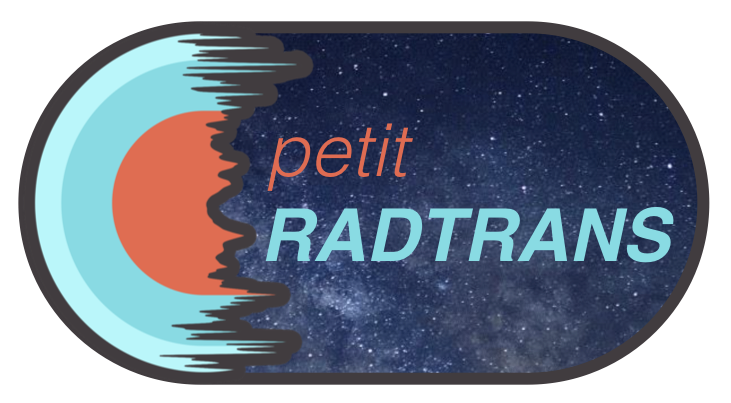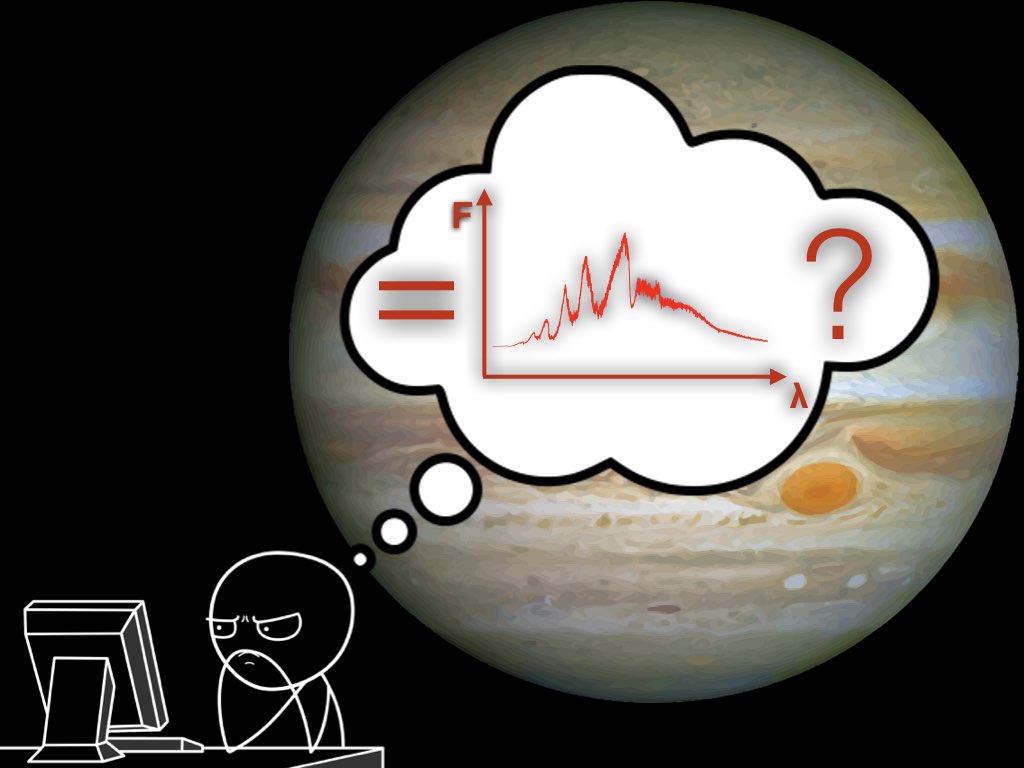code
petitRADTRANS:
Our group develops the open-source radiative transfer and retrieval package petitRADTRANS. The code’s documentation can be found here; the GitLab repository can be found here.

petitCODE:
petitCODE is a one-dimensional code for calculating the structures as well as the emission and transmission spectra of planet atmospheres in radiative-convective and chemical equilibrium. “petit” in petitCODE stands for “Pressure-Temperature Iterator and Spectral Emission and Transmission Calculator for Planetary Atmospheres”. At the moment petitCODE is not publically available. However, we are currentlty porting petitCODE to petitRADTRANS, to unify our tools into one open-source package.
petitCODE has been used to calculate the atmospheric models for clear and cloudy transiting and self-luminous planets, ranging in mass from super-Earths to planets of multiple Jupiter masses. It has been used for spectral characterization, but also for planet evolutionary calculations.
Some of petitCODE's main properties are summarized below:
- petitCODE applies the 1-d plane-parallel approximation.
- Radiative-convective equilibrium solutions.
- Self-consistent treatment of scattering, emission, and absorption processes.
- Equilibrium chemistry, including equilibrium condensation.
- Molecular, atomic, and ion opacities for calculating planetary atmospheres from the coolest to ultra-hot Jupiters, using high-temperature line lists where available.
- H2-H2 and H2-He collision induced absorption (CIA) and H- opacities.
- Cloud modeling, coupled self-consistenly to atmospheric structure solution and radiative transport. Al2O3, H2O (ice), Na2S, KCl, Fe, MgSiO3, Mg2SiO4 and MgAl2O4 clouds can be included.
- Correlated-k assumption for the line opacity treatment within the code.
- Calculation of angle-dependent, dayside-averaged or globally averaged emission spectra.
- Calculation of transmission spectra.
- Spectral resolutions of λ/Δλ = 10, 50, 1000 and 106.
petitCODE is a well tested and benchmarked code (see Baudino et al. 2017). Some examples for tests can be found below.
-
Comparison between correlated-k and line-by-line calculations:
In order to test the reliability of the correlated-k implementation, the resulting planetary emission spectra were compared with spectra calculated at high resolution using a line-by-line radiative transport scheme. The correlated-k calculations were carried out at a resolution R=λ/Δλ of 10, 50 and 1000. The line-by-line calculation was carried out at a resolution of 106 and was subsequently rebinned to the three correlated-k resolutions. The error between correlated-k and the line-by-line calculation was in the low single-digit percentage range, usually at ~ 1 %.
A figure showing such a comparison calculation can be found here (taken from Mollière et al. 2015). -
Checking for flux conservation:
The radiation field arising from the converged solutions of the atmospheric structures fulfill flux conservation. At the top of the atmosphere the upward-moving radiative flux is equal to the imposed insolation and internal flux. In the deeper layers of the atmosphere the upward-directed radiative flux is equal to the imposed internal flux (the stellar flux has been absorbed in layers above). Finally, the radiative flux dwindles in the deepest regions because the atmosphere becomes convectively unstable and the flux is transported by convection. A figure showing an example calculation of the upward-moving flux can be found here (taken from Mollière et al. 2015). -
Reproducing analytical solutions:
When enforcing the appropriate simplyfiying assumptions, petitCODE reproduces analytical solutions for planetary structures, such as the angle-dependent double-gray solutions from Guillot et al. (2010). A figure showing a comparison can be found here. The lines from left to right are pressure-temperature structures for insolation incidence angles of cos(θ) = 0.001, 0.01, 0.1, 0.2, 0.3, 0.4, 0.5, 0.6, 0.7, 0.8, 0.9, 1. -
Scattering implementation:
When enforcing the appropriate simplyfiying assumptions, petitCODE scattering results perfectly agree with the predictions from Chandrasekhar's H functions. -
Benchmarking:
petitCODE has been succussfully benchmarked (see Baudino et al. 2017).
